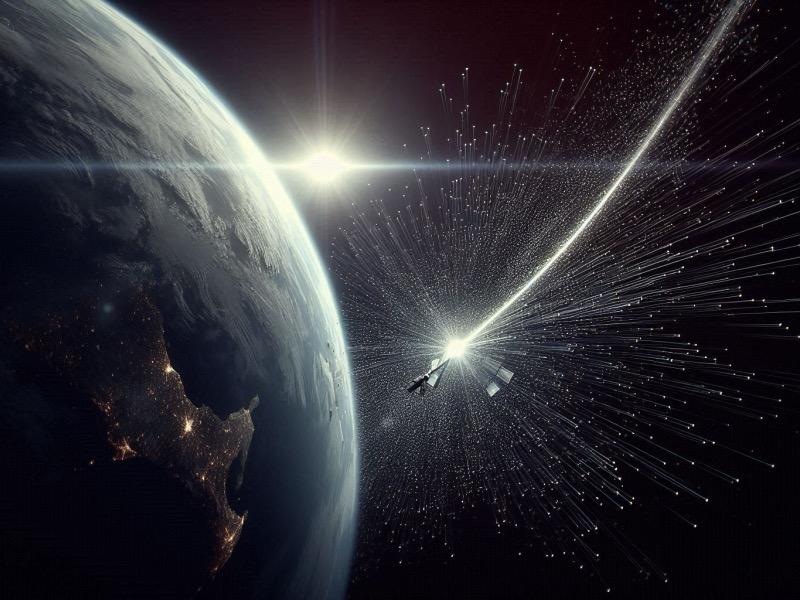A report by defense analyst Todd Harrison concerning the potential expenses associated with the Golden Dome missile defense system sparked significant discussion last month. Harrison's analysis contrasted sharply with previous estimates. President Trump had suggested a $175 billion price tag over three years, while the Congressional Budget Office (CBO) projected costs ranging from $161 billion to $542 billion over two decades. Harrison's "robust all-threat defense" scenario estimated a staggering $3.6 trillion over the same period.
During an October 2 meeting with reporters, Harrison explained his methodology and invited scrutiny of his calculations. The senior fellow at the American Enterprise Institute showcased the "Defense Futures Simulator," an online tool used to generate the Golden Dome cost estimates. This simulator empowers users to create, simulate, and analyze different defense strategies and budgets using real-world data. Harrison emphasized the tool's public availability, encouraging users to input their own assumptions. "I get frustrated with people throwing out a number, but then they don’t tell you the assumptions behind it," Harrison stated. "You’ve got to know the altitude at which the interceptors are going to be orbiting. You got to know the minimum altitude at which they’re going to intercept a missile, you got to know the fly-out time of the threat missile.”
The Golden Dome system, initiated by President Trump in a January 2025 executive order, aims to safeguard the continental United States from ballistic, hypersonic, and cruise missile threats through a global network of sensors and interceptors. Congress initially allocated $25 billion in July 2025. The primary cost driver lies in the space-based interceptor constellation – satellites designed to detect, track, and intercept missile threats during their early flight stages.
Harrison's demonstration highlighted that even slight variations in the interceptor's intended altitude can drastically impact the constellation's size and overall cost. The simulator assessed nine different options for space-based interceptors, covering boost-phase, glide-phase, and midcourse phase interception. The figures escalated rapidly. Intercepting five missiles launched simultaneously during the boost phase would necessitate 5,000 interceptors in orbit. Addressing 50 missiles would require 50,000 interceptors. A comprehensive defense capable of intercepting 250 missiles would demand 250,000 interceptors in orbit. “And that still would not be enough to intercept everything if Russia and China launched all their ICBMs at once,” Harrison noted.
This seemingly disproportionate ratio of interceptors to targets arises from the satellites' limited fly-out range, necessitating a large quantity for continuous global coverage. Harrison also pointed out the crucial role of delta-V – the interceptor's ability to change velocity, directly influencing its propellant requirements. The U.S. Space Force has requested industry prototypes with a delta-V of 10 kilometers per second, a higher figure than previously assumed. “Which is very high,” Harrison said. “When you have a larger delta-V for each interceptor, that means each interceptor has a greater fly-out range. It can cover a much larger area. Therefore you don’t need as many in the constellation. So delta-V is a big one.” The type of propellant used by the threat missile (solid or liquid) also significantly affects the required constellation size.
To maintain realistic estimates, Harrison imposed a budgetary constraint, limiting Golden Dome's annual cost to a quarter of the U.S. defense budget. “If you go truly budget unconstrained, that’s not helpful because it’s unrealistic,” he said. “I did then say, let’s not exceed more than a quarter of the defense budget in any given year because that would be crazy for one program to consume more than a quarter of the defense budget.”
Harrison identified the Trump administration's emphasis on boost-phase intercept as a major contributor to escalating costs. Trump's directive prioritized space-based interceptors targeting missiles during their boost phase – over enemy territory, before warhead deployment. This focus on boost-phase interception drives up costs due to the need for a high interceptor-to-target ratio. "because you end up with these ratios that I have to have 1,000 interceptors in orbit in order to hit one missile at a time,” Harrison said.
Shifting the strategy to midcourse defense would allow interceptors more time to reach targets, increasing their coverage area and reducing the required number. “I have found that there are a lot of people in the missile defense community that believe in boost-phase space-based interceptors as a matter of religious faith … and they don’t care to look at the numbers,” Harrison said.
Gen. Michael Guetlein, leading the Golden Dome program, is developing a proposed architecture, expected to focus on the overall balance of space-based and ground-based defense systems, rather than specific interceptor details. “I think they’re actually a level above this,” Harrison said of the architecture design. “I think they’re doing that big architecture look at how much of each of these systems do we want? And then they’ll go back and do more detailed analysis for space-based interceptors, and what would it take to do that.” The space-based interceptors would enhance existing ground- and sea-based defenses within the Golden Dome framework.
Harrison stressed that while his simulator generates varying cost estimates based on assumptions, all scenarios are data-driven. “You can come up with lots of different numbers,” he said, “but they would be backed by data.”


